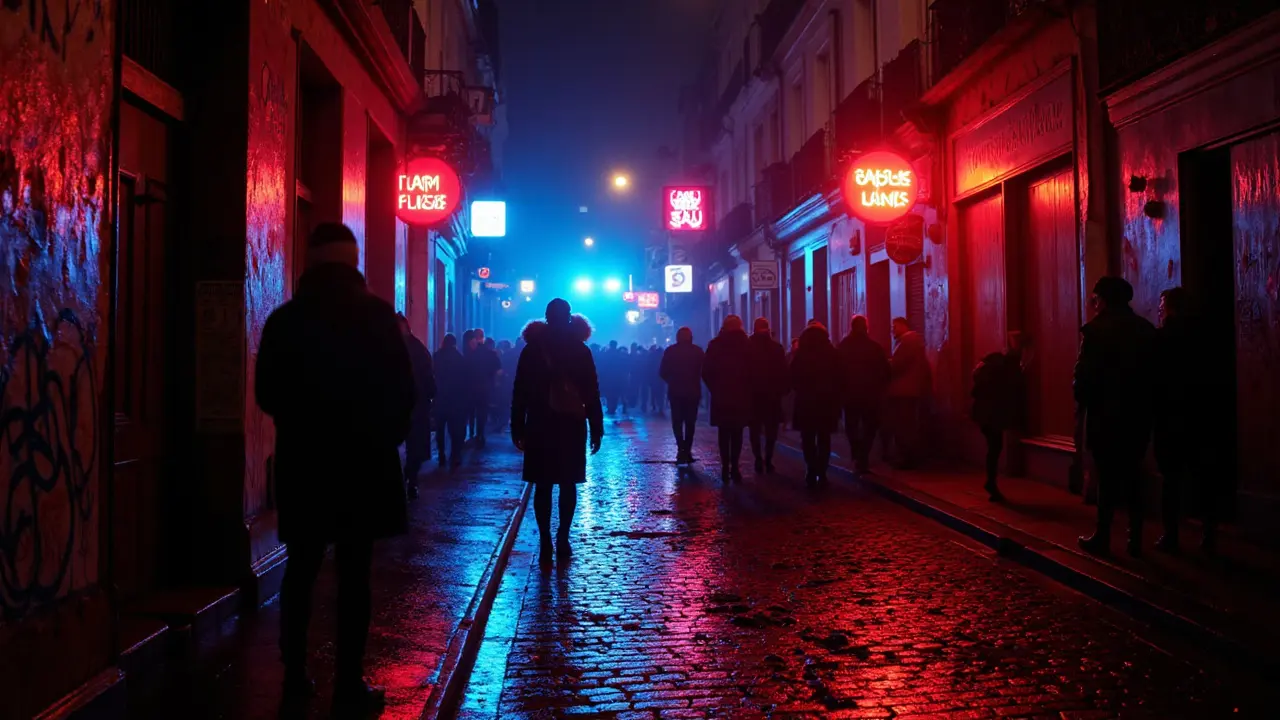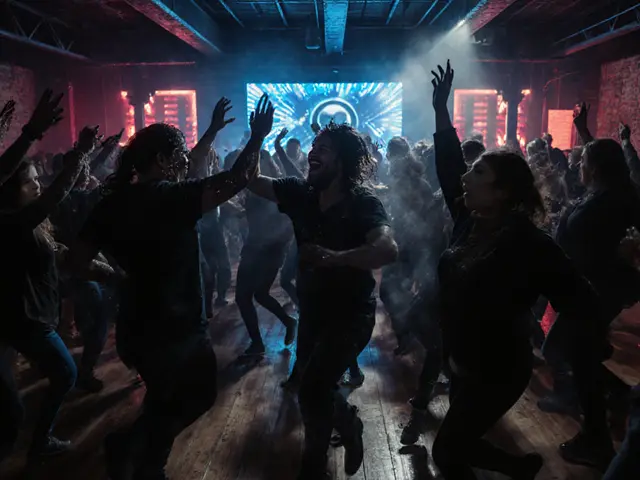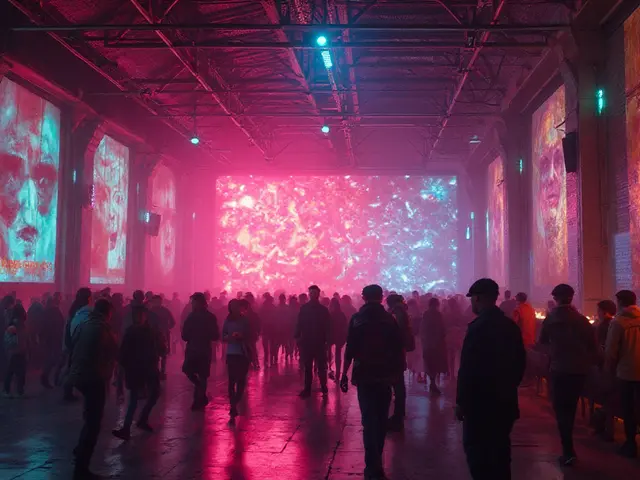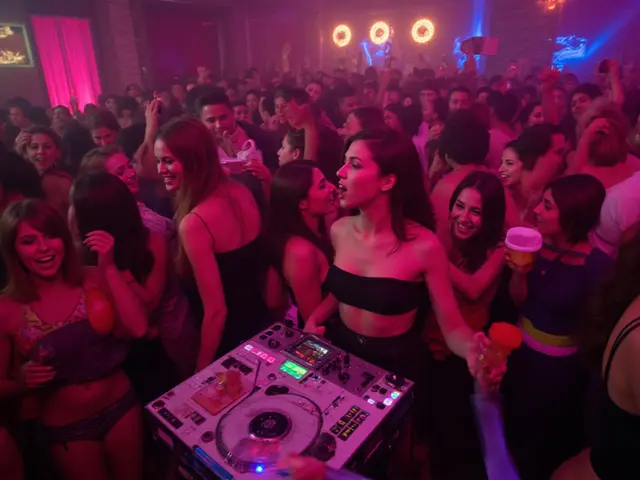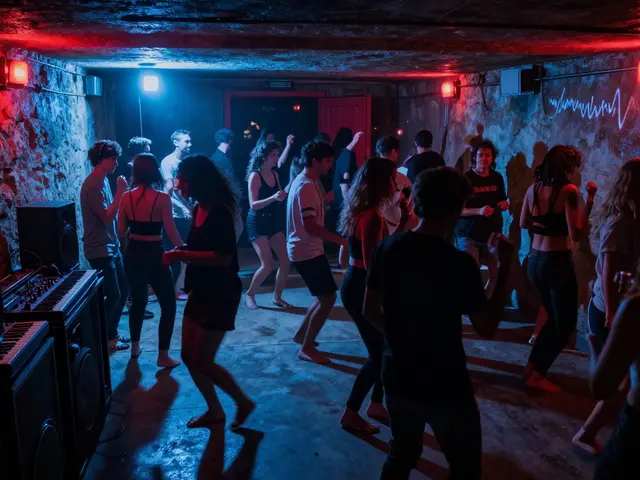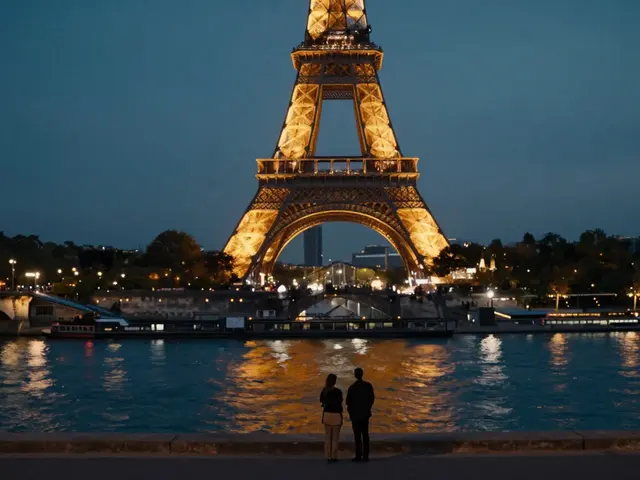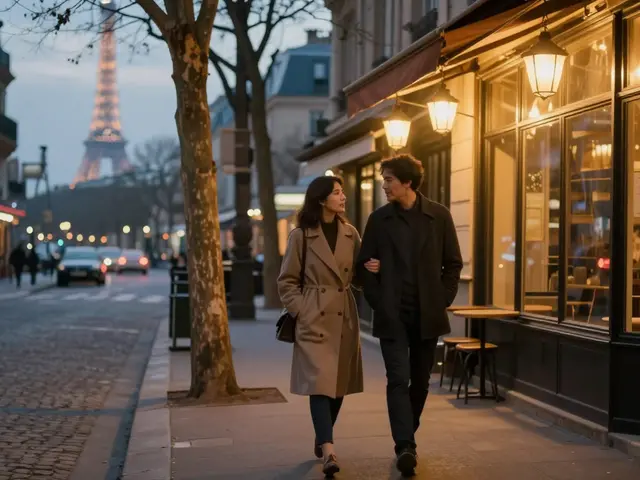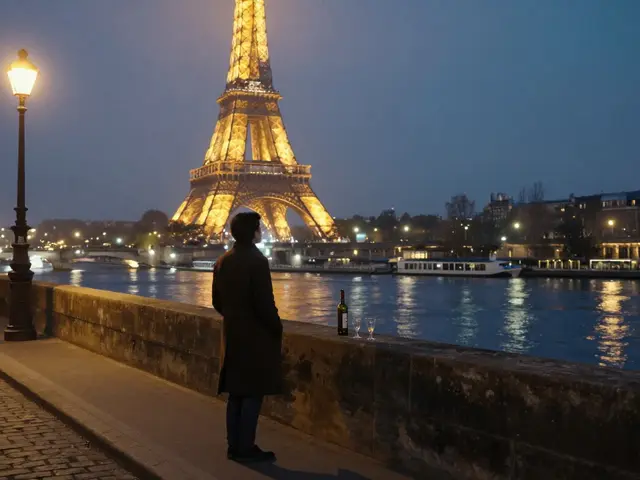Paris at night is like a whole different city. Sure, you can catch the Eiffel Tower sparkle or sip on overpriced wine in some fancy bar, but if you want the real action, you have to look under the surface—literally. Paris’s underground club scene is where the locals, expats, and music lovers mix away from the Instagram crowds. Some of these clubs are hidden in old wine cellars, others are tucked behind unmarked doors or way out in the city’s edge, but each spot comes with its own rules and style.
Ever ended up outside a packed club with a tiny crowd and a guy with a clipboard checking names? Welcome to Paris’s secret parties. There’s no big neon sign—usually just a whispered code, a hush-hush Facebook event, and maybe directions sent an hour before. If you’re willing to hunt a little, you’ll find everything from techno bunkers blasting beats till sunrise to speakeasies with cocktail pros and all-night dancers.
Don’t worry about speaking perfect French or dressing like you just stepped off a runway. Half the crowd is international, and as long as you look like you belong (ditch the touristy sneakers and giant backpacks), you’ll fit right in. Plus, with cover charges usually lower than the Champs-Élysées mega-clubs, you’ll save enough for that real Parisian late-night snack—greasy, delicious, and just what you need at 5 a.m.
- Key Points: Paris Underground Club Scene Snapshot
- Direct Answer: Where to Find Paris’ Secret Nightclubs
- Inside the Paris Underground: What Makes It Special
- Types of Paris Nightclubs: From Caves to Warehouses
- Essential Tips for Navigating the Scene
- Paris vs. Other Nightlife Cities: A Quick Comparison
Key Points: Paris Underground Club Scene Snapshot
If you want a crash course on Paris nightlife beyond the touristy haunts, here’s what you really need to know. The night club Paris underground scene is not just one vibe—it's a mix of old wine cellars, pop-up events, and converted warehouses. And this isn’t just for hardcore partiers; you’ve got everything from chill speakeasies to intense techno parties in dark, industrial spaces.
- Most underground clubs in Paris are found in neighborhoods like Belleville, Oberkampf, and the 11th and 20th arrondissements. You’ll rarely see a big sign; sometimes you just get directions through friends or private event pages on Facebook or Instagram.
- The music is a big draw. Expect everything from deep house and techno to hip hop and experimental beats. Local DJs often headline, but international acts love to drop in for surprise sets.
- The crowd is mixed—locals, international students, expats, night owls, and everyone in between. It’s less about VIP tables and more about good energy and being open to new music and people.
- Dress codes are way more relaxed compared to the classic Paris “bling” clubs. Think sneakers, cool tees, vintage jackets, and lots of black. Flip flops or big tourist bags? Just leave those at home.
- Entry fees are usually between €5 and €20, sometimes even free if you arrive super early or get on a guest list. Drinks tend to be cheaper than at the city’s flashier clubs, and some places are BYOB—seriously, check in advance!
- Most parties start late—don’t even think about showing up before midnight. Many places keep the music going until 6 or 7 a.m. when the metro opens again.
These clubs aren’t in your typical guidebook. If you’re in Paris and want to try something real, the underground scene is the place to find it.
Direct Answer: Where to Find Paris’ Secret Nightclubs
Looking for the real deal with night club Paris options that the guidebooks gloss over? You’re in luck—Parisians love their hidden spots, and there are a few tried-and-true ways to track them down.
- Le Marais (3rd & 4th arrondissements): This area is stacked with LGBTQ+ bars, low-lit speakeasies, and basement dance clubs like Les Bains and La Java. Look for narrow side streets and listen for music thumping behind unmarked doors.
- Oberkampf (11th arrondissement): This strip is packed with underground parties, especially in half-basement venues like Nouveau Casino or Le 1999. Flyers taped to lamp posts are often your best clue for pop-up events.
- SoPi (South Pigalle, 9th arrondissement): Tucked between sex shops and neon, you’ll stumble upon secret jazz bars and clubs like Le Carmen or Le Sans Souci with only a faint doorbell and a velvet rope as a hint.
- Warehouse Districts (Saint-Denis, outskirts): For all-night electronic events, check “La Station – Gare des Mines” or “Warehouse Paris.” These are usually in old factories, with address drops happening on Instagram or private WhatsApp chats just hours before.
Most of these secret clubs don’t advertise with big banners or websites. Here’s the kicker—you’ll often need to:
- Follow Paris-based DJ collectives on Instagram. Handles like @possessiontechno, @la_creole_paris, or @concrete.music regularly post about underground events (and drop the entry codes!)
- Join local Facebook groups such as "Soirées Paris" or "Paris Nightlife & Events"—that’s where the cool invites land first.
- Keep your ears open at regular bars. Bartenders or local regulars can point you to tonight’s pop-up or after-party.
If you love data, here’s a quick breakdown of the top neighborhoods and their club “density”—meaning, how many hidden spots you can expect to find in a night:
| Neighborhood | Avg. Secret Clubs/Block | Main Music Styles |
|---|---|---|
| Le Marais | 3-4 | Electro, Disco, Indie |
| Oberkampf | 2-3 | Techno, Rock, Pop |
| SoPi | 2 | Jazz, Funk, House |
| Saint-Denis | 1 (huge warehouses) | Techno, EDM |
The bottom line? Skip the touristy mega-clubs and get cozy with apps, social media, and word of mouth. This is how the locals do it—and where the best stories start.
Inside the Paris Underground: What Makes It Special
It’s not hype—the Paris underground club scene is actually different from your standard tourist spots. Here, what you lose in shiny décor, you gain in pure vibe. The focus isn’t on glitz but the music, the energy, and the people you meet. These clubs tend to show a different side of Paris, where you can dance next to international students, local musicians, and sometimes even famous DJs just off a big show elsewhere in Europe.
One thing that stands out? The venues themselves. Lots of these hidden gems are carved out of old stone cellars, tucked under railway arches, or set up in converted warehouses along the Seine. Spaces like La Machine du Moulin Rouge have multiple rooms that feel like different worlds, while spots like Rex Club are legendary for underground electronic, drawing serious crowds since the '90s. It’s not unusual for a regular night to stretch until 6 or even 7 a.m.—a far cry from clubs closing at 2 a.m. back home.
If you’re after a real connection with Paris culture, these underground clubs are where new music trends drop. Places like Concrete helped launch the city’s house and techno legends, and venues like Le Garage foster up-and-coming talent with open decks and wild, no-rules energy. These aren’t places where people stand around looking bored—everyone’s actually there for the music, and the dancing doesn’t stop until the lights come on.
Want a peek at what makes the night club Paris experience unique on the numbers side? Here's a quick look:
| Venue Type | Typical Opening Hours | Average Cover Charge (€) | Music Style |
|---|---|---|---|
| Cellar Club | 11pm – 6am | 10-15 | Techno, House |
| Warehouse | Midnight – 7am | 15-20 | Electro, Indie, Live sets |
| Speakeasy/Pop-Up | 10pm – 3am | Free-10 | Mixed/Experimental |
Dress code? It’s more about style than suits. Sneakers work if they’re clean, and nobody cares about designer labels. Getting in is about attitude—don’t come in drunk, don’t argue with the door staff, and be cool with crowds (these places can pack in over 500 people on a big night). If you want a drink, expect prices around 8-12€ for a beer or simple cocktail—way cheaper than tourist traps.
For locals, these clubs are more than just dance spots; they’re communities where friendships and music scenes form. Bring an open mind, stay flexible about plans (you might club-hop all night), and don’t expect fancy Instagram lighting. It’s all about the crowd, the beats, and catching a cab home when the sun comes up.
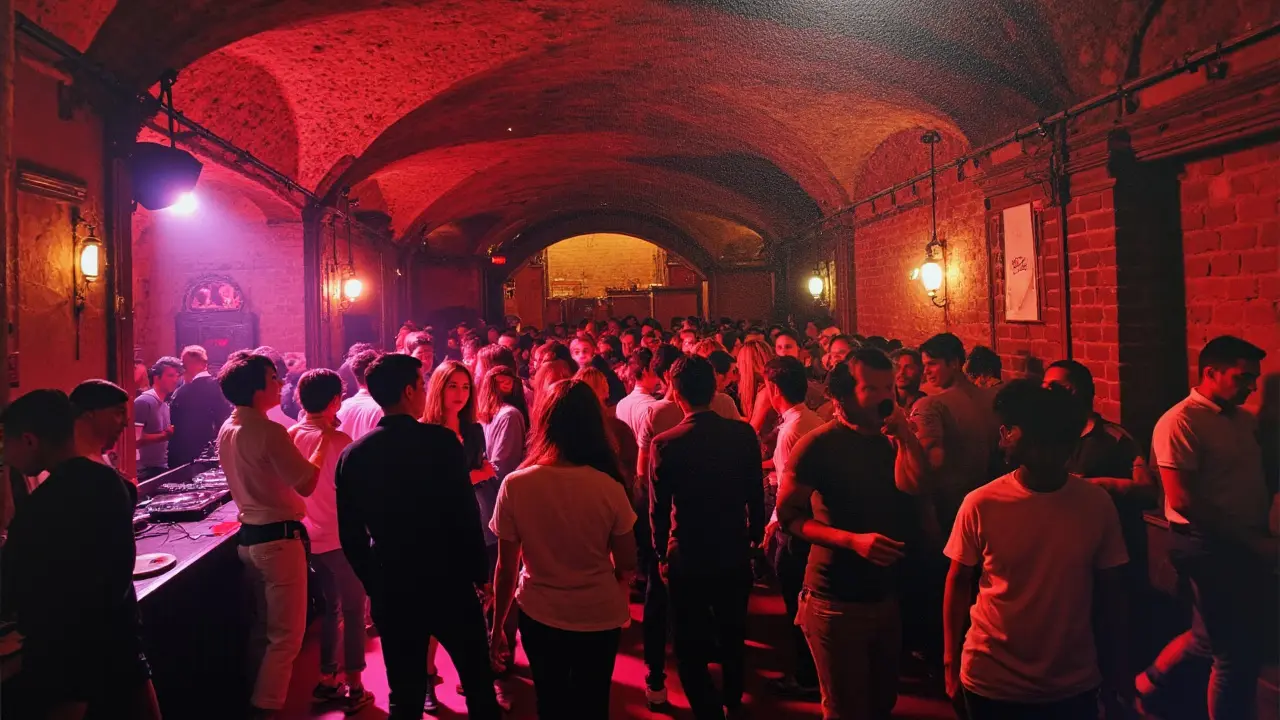
Types of Paris Nightclubs: From Caves to Warehouses
Paris isn’t just about velvet ropes and velvet couches. The city’s club world is split across a few styles, each with a totally different vibe. Here’s how it breaks down, so you know what you’re getting into when searching for the night club Paris experience.
1. Underground Caves
These are literally under the streets. Clubs like Le Caveau de la Huchette or Les Caves du Roy are built in centuries-old limestone cellars. You get low arched ceilings, stone walls, and sound that seems to bounce off every surface. Perfect for fans of jazz, electro swing, or deep house. Parties in these spots feel pretty intimate—usually less than 200 people packed into a maze of tunnels. During the 2024 Olympics, cave clubs reported being full almost every night, with some guests queueing for over an hour just to get in.
2. Warehouse Raves
The big, loud, sweaty ones. These are usually in Paris’s 13th, 18th, or just outside in Pantin and Aubervilliers, where old factories turn into massive venues. Think places like La Station – Gare des Mines or Docks Pullman. There’s hardly any decor—it’s all about lights, sound, and straight-up techno or house until sunrise. Warehouse parties often bring in global DJs and are less picky about who you are, more about your love for dancing.
3. Speakeasy-Style Clubs
Want that feeling of being in on a secret? Spots like Lavomatic or Moonshiner hide clubs behind laundromats or inside bars. You push through a nondescript door or even a fake wall, and suddenly you’re in another world with craft cocktails and a chilled crowd. These places cap numbers to keep things low-key, and reservation is either mandatory or highly recommended. The staff can seem a bit aloof, but that’s the Parisian way—just act like you belong.
4. Rooftop Clubs
During summer you’ll find clubs like Le Perchoir or Nüba buzzing with life. The draw here is the view: you can sip cocktails and dance with the skyline as your backdrop. Expect house and funk sets, a mixed crowd, and drinks that are pricier than elsewhere. But hey, you’re paying for the vibe—and Instagram photos with the Seine in the background.
5. LGBT+ Venues
The Marais neighborhood is stacked with inclusive, friendly clubs. Le Depot is known for letting loose no matter what, and Klub is famous for drag night bashes. These parties mix all ages and identities, so there’s no dress code stress and plenty of wild moments.
6. Hybrid Spaces
These are multi-use. Places like Badaboum have a club, live concert stage, AND lounge chill zone all in one. You can catch a band, then sneak downstairs when the DJ starts spinning after midnight. It’s popular with locals who want a flexible night out.
Here’s a snapshot of the most popular types and a few key facts:
| Type | Typical Capacity | Popular Locations | Usual Music Genres |
|---|---|---|---|
| Underground Caves | 50-200 | Latin Quarter, Saint-Germain | Jazz, House, Retro |
| Warehouse Raves | 300-2000 | Pantin, La Villette, 13th | Techno, EDM, Hip Hop |
| Speakeasy Clubs | 40-120 | Bastille, République | Eclectic, Indie, Funk |
| Rooftop Clubs | 80-400 | Seine River, Menilmontant | Funk, House, Chillout |
| LGBT+ Venues | 50-400 | Le Marais | Pop, Electro, Drag Shows |
| Hybrid Spaces | 100-600 | Opéra, Bastille | Varied |
If you’re checking out the scene, club hopping is totally doable—especially if you start early and keep things flexible. Save the warehouse for when you want to go all night and maybe stick with a cave if you’re after live music and laidback energy.
Essential Tips for Navigating the Scene
Getting the most out of the Paris underground club scene isn’t rocket science, but you’ll want to show up ready. First off, most secret spots don’t post their locations on Google. Instead, check Instagram (look for stories by local DJs or nightlife collectives) or underground party groups on Facebook. The scene changes quickly, so yesterday’s hotspot could be shut down or moved by next weekend. Word of mouth is gold—ask bartenders, hostel staff, or that stylish crowd you spot around Canal Saint-Martin.
Entry rules can be strict, but not in the way you’d expect. Forget meathead bouncers; here, a casual but confident vibe gets you further than dressing to the nines. Black jeans and comfortable shoes are usually good, since you’ll be standing and dancing for hours. Avoid flashy tourist gear. Be polite at the door, and if you’re on a guest list, have your confirmation or QR code ready. It sounds obvious, but a lot of people get turned away just for being pushy or looking confused.
- Cash is king. Many of these places don’t accept cards at the bar or entry, so bring euros.
- Metro closes around 1:15 AM on weekends, so check night bus routes or have a rideshare app ready. Most parties run until dawn.
- Stay hydrated. French clubs can get hot, and bottles of water aren’t always easy to come by once you’re inside.
- Most underground clubs have basic security, but pickpocketing does happen. Don’t bring more than you need, and keep your stuff close.
- If you’re worried about language, relax—almost everyone speaks some English. Learn a few basics (“Bonsoir!” and “Merci!” go a long way).
- Follow the club’s rules about smoking or taking photos. Some places hate phones on the dancefloor, and flashing your camera can get you kicked out.
You’ll notice each night club Paris has its own unwritten codes—watch what locals do, and follow suit. Blending in isn’t about faking it, just being open and respectful. Lastly, if a venue looks sketchy or unsafe, don’t force it—there are plenty of other parties, and the magic of the Paris underground is that it never sleeps. You’ll always find another beat somewhere nearby.
Paris vs. Other Nightlife Cities: A Quick Comparison
If you’ve ever wondered how night club Paris compares to places like Berlin, London, or Barcelona, here’s the straight story. Paris stands out, but not for the reasons most people expect. Let’s break down some key points and see where Paris shines—and where other cities might have the edge.
| City | Main Vibe | Typical Hours | Entry Fee Range | Music Styles | Special Feature |
|---|---|---|---|---|---|
| Paris | Secret, artsy, unpredictable | 11 pm – 7 am | €10–€25 | Techno, house, hip hop, French electro | Hidden locations, strict door policy |
| Berlin | Raw, non-stop, all about techno | 1 am – way past noon | €12–€30 | Techno, minimal, experimental | Open all weekend, casual dress code |
| London | Trendy, diverse, big crowds | 10 pm – 4 am (later on weekends) | £15–£40 | House, drum & bass, pop, indie | Superclubs, VIP tables, big-name DJs |
| Barcelona | Beachy, casual, open-air parties | Midnight – 6 am | €10–€30 | Reggaeton, EDM, house, Latin | Seaside clubs, rooftop venues |
Paris doesn’t do giant warehouse clubs quite like Berlin or Ibiza, but makes up for it with a secret-handshake vibe. Clubs here love hidden doors, basement dancefloors, and no-nonsense door selection. You won’t see endless club promos—half the fun is hunting for those gem locations on social or getting an invite through friends.
Another thing: the music is all over the place. One night you’re grooving to French disco in a cave, the next you’re deep into underground techno on a boat docked on the Seine. Compare that with Berlin’s almost cult-level commitment to techno, or London’s big-ticket commercial events.
And while some European cities let you party with little prep (just show up and pay at the door), Paris’s clubs often like guest lists, recommendations, or even a quick Instagram message to get yourself in. So, it’s a bit more effort, but you score a way more local experience. The crowd? Way more local artists, expats, and music nerds—less bachelor parties and bottle-service drama.
- If you want maximum club time (14+ hours in a row), Berlin wins hands down.
- If you want rooftop or beachside venues, nothing beats Barcelona.
- For big-name DJs and giant crowds, London is king.
- If you want surprise, mystery, and insider-only nights: Paris takes the crown.
Bottom line: Paris underground clubs are for folks who like a little challenge, a lot of energy, and the bragging rights of saying, “Yeah, I got in.”

